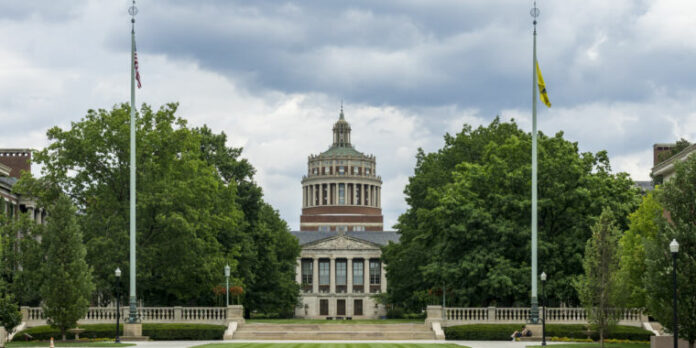We’ve been following the saga of Ranga Dias since he first burst onto the scene with reports of a high-pressure, room-temperature superconductor, published in Nature in 2020. Even as that paper was being retracted due to concerns about the validity of some of its data, Dias published a second paper claiming a similar breakthrough: a superconductor that works at high temperatures but somewhat lower pressures. Shortly afterward, that got retracted as well.
On Wednesday, the University of Rochester, where Dias is based, announced that it had concluded an investigation into Dias and found that he had committed research misconduct. (The outcome was first reported by The Wall Street Journal.)
The outcome is likely to mean the end of Dias’ career, as well as the company he founded to commercialize the supposed breakthroughs. But it’s unlikely we’ll ever see the full details of the investigation’s conclusions.
Questionable research
Dias’ lab was focused on high-pressure superconductivity. At extreme pressures, the orbitals where electrons hang out get distorted, which can alter the chemistry and electronic properties of materials. This can mean the formation of chemical compounds that don’t exist at normal pressures, along with distinct conductivity. In a number of cases, these changes enabled superconductivity at unusually high temperatures, although still well below the freezing point of water.
Dias, however, supposedly found a combination of chemicals that would boost the transition to superconductivity to near room temperature, although only at extreme pressures. While the results were plausible, the details regarding how some of the data was processed to produce one of the paper’s key graphs were lacking, and Dias didn’t provide a clear explanation. Nature eventually pulled the paper, and the University of Rochester initiated investigations (plural!) of his work.
Those investigations cleared Dias of misconduct, and he quickly was back with a report of another high-temperature superconductor, this one forming at less extreme pressures—somewhat surprisingly, published again by Nature. This time, things fell apart much more rapidly, with potential problems quickly becoming apparent, and many of the paper’s authors, not including Dias, called for its retraction.
The University of Rochester started yet another investigation, which is the one that has now concluded that Dias engaged in research misconduct.
The extent of this misconduct, however, might never be revealed. These internal university investigations are generally not made public, even if it might be in the public’s interest to know. The only recent exception is a case where a researcher accused of misconduct sued her university for defamation over the outcome of the investigation. The university submitted its investigation report as evidence, allowing it to become part of the public record.
Behind the scenes
That said, we have learned a fair bit about what has happened inside Dias’ lab, thanks to Nature News, a sister publication of the scientific journal that published both of Dias’ papers. It conducted a tour-de-force of investigative journalism, talking to Dias’ grad students and obtaining the peer review evaluations of Dias’ two papers.
The investigation showed that, for the first paper, Dias simply told his graduate students that the key data came from before he had set up his own lab, which explains why they weren’t aware of it. The students claimed that the ensuing investigations didn’t contact any of them, suggesting they were extremely similar in scope. By contrast, the students claim to have been more aware that the results presented in the second paper didn’t match up with experiments and, in at least one case, suggested Dias clearly misrepresented his lab’s work. (The paper claimed to have synthesized a chemical that the students say was simply purchased from a supplier.)
They were the ones who organized the effort to retract the paper and said that the final investigation actually sought their input.
Meanwhile, on the peer review side, the reporting does not leave Nature looking especially good. Both papers required several rounds of revision and review before being accepted, and even after all this work, most of the reviewers were ambiguous at best about whether the paper should be published. It was an editorial decision to go ahead despite that.
While things seem to have worked out in the end, the major institutions involved here—Nature and the University of Rochester—aren’t coming out of this unscathed. Neither seems to have taken early indications of misconduct as seriously as it should have. As for Dias, the reporting in the Nature News piece should be career-ending. And it’s worth considering that, in the absence of the reporter’s work, the research community would probably remain unaware of most of the details of Dias’ misconduct.


